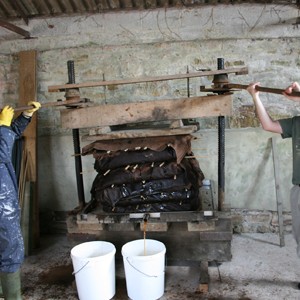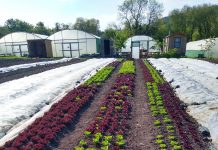It seems you are rarely more than 100 yards form someone making their own cider around here. And you are rarely that far from an apple tree, and it is satisfying to use them rather than chuck them. Using fully ripe apples, spotlessly clean equipment and barrels, and a cool place to ferment, all help make good cider.
Waiting for the apples to ripen allows the sugars and flavours to develop. It is tempting to shake them all off the tree as soon as the first apple falls, but you should leave them for a month on the ground while they mature. The second largest cider factory in England, Magners in Shepton Mallet, is blocking up regularly this autumn because the apples it is using are unripe and starchy.
The machinery needed to make cider is expansive, so see if you can share with a well willed neighbour. Using a really good pulper that chews the apple into a fine pulp makes pressing the apples quick and easy. If you want your own equipment, go to Vigo in Cullompton. They sell all the best equipment, and you will come home happy and bankrupt. But you are rarely more than 15 miles from someone who will press your apples for you, so make enquiries locally.
They may also offer you a bottling service, and this is good if you prefer drinking apple juice. Although dessert apples are reckoned to be best for juicing, cider apples juice makes a drink with more complex flavours and tannins.
Cider matures best at a constant cool temperature. Unless you have a good underground barn which does not fluctuate in temperature, using large barrels is best. We have a modern barn which warms up in the summer, and the cider sugars ferment out and make a very dry, astringent, drink unless you keep adding sugar.
It is best to rack off the cider from one barrel to another in January, leaving its lees, the yeasty sediment, behind. This allows a slightly sweeter secondary fermentation. A slow fermentation is reckoned to make the best cider. If it is made in November, it will ferment slowly. Racking it off a second time in April or May will further stop it souring by sitting on its decaying yeasts.
We use plastic barrels, as it is almost impossible to clean all the vinegar bacteria out of wooden barrels. There is a lingering scrumpy tradition that you should use rotten wooden barrels, which make for a horrible taste. Keeping the air out at all stages is important too.
And those, in my opinion, are the basics. It is a complicated subject, and there are infinite techniques you can use. And a plethora of nasty chemicals and bought yeast you can add to help you cut corners and make a standardised product. But we find we make a fine cider without any funny business.
A longer account which I have found very useful can be found in James Crowden’s book Ciderland. I warn you that there are as many different ways of making cider as there are people. What did the apple say to the pumpkin at Halloween? Nothing, it just sat be cider.









